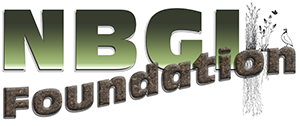I meant to roll out of bed early last Saturday and go once more afield in search of the long beard. But after an arduous week, my gumption fell short and I slept in until 7. My nephew, who is 12 and just learning to hunt, couldn’t go with me this day (baseball and hunting sometimes conflict), thus I felt no guilt sleeping in. Having risen afresh and finished perking up a fine cup of Columbian, I ambled to my back porch to listen – on the odd chance I might hear a gobbler on our lands. (Hey! It’s happened before … and I bet most turkey hunters who have been at it awhile can tell you about an old gob they’ve killed using tactics less than textbook.)
I heard no gobbling, but I did hear a male bobwhite whistling. At first I wasn’t sure, but the second call was plainly a bobwhite. This thrilled me more than any gobbler could have. As someone who has dedicated many years to quail recovery – hearing one on our families’ land made my week. We don’t have a ton of land and I don’t have much equipment with which to manage it. But I have been able to keep a couple acres in an early-successional stage using primarily hand tools.
<
p dir=”ltr”>My arsenal consists of a chainsaw, back-pack sprayer, Weedeater and riding lawn tractor (notice I don’t say mower – can’t stand the word MOW). With these meager tools I fight an incessant battle against sweetgum, red maple, ailanthus and fescue. It is a battle I am losing, nevertheless I manage to keep some “quail cover” on my land … and from time to time we have quail.
This male was a “prospector.” I could tell he was moving through and calling in search of a mate. His calls at first were far away – by the cut-over up on Paw Paw’s land. As morning turned into afternoon, I heard him again much closer, following the creek bottom through my brother-in-law’s piece, and by late afternoon he was within 50 yards of my house on the tract we purchased nine years ago to help put the “farm” back together.
While grilling that evening I no longer heard him, and alas on Sunday I heard him no more. I hoped he would have found a mate and nested on our patch. Three years ago a pair did just that, and we had the joy of occasionally seeing the brood bugging along our trails.
I thought about the Prospector all day. I imagined how an animal does not worry about the future of their species. They simply get up and “do.” It doesn’t occur to them that they can fail. Each day they venture forth against great odds and sometimes prevail. I have come to believe that we should never underestimate the power of life itself to persist. And I have come to know that the bobwhite as a species is much more resilient than many think, else they’d long since be gone.
This also set me to thinking about habitat and how even small pieces of it can make a difference. As a biologist, I often hear my peers say it takes several thousand acres of contiguous land well managed for quail to maintain a population through time. This may be true to a certain extent, but if it were entirely true, quail would now be an endangered species.
The Prospector is “hard-wired” to move every spring (as is the Prospectress). Each year thousands of coveys “disintegrate,” scattering to the “four winds” as some say. And, while some remain on their winter grounds to nest, many leave good cover in search of a mate and a new beginning.
In days of old (back in the 1950s and 60s), wanderers ended up in good cover simply because there was a lot more of it scattered by accident across our landscape (if don’t believe that – take a look at aerial photos of your area in 1950 and again in 2012). Nowadays, many don’t end up in good cover before they end up dead.
But what about those landowners who do not have 2000, or even 200 acres?
And what about those biologists who tell them – “go buy some chickens, your chances for quail here are slim to none.”
I argue that even small patches of cover one acre to a few acres in size, can contribute to the survival of the bobwhites across the landscape. In my case I have about two acres total that I am able to keep as Guthrey’s “useable space” for quail (Dr. Fred Guthrey. 2000. On Bobwhites. University of Texas A&M Press. Dr. Guthrey defines “bobwhite habitat” in terms of useable space through time).
While I do believe it is true that we have to have those larger properties (and the more of them the merrier) to serve as long-term population sources for quail, I also believe even small pieces can help maintain the species, not to mention the role these small patches can play in supporting pollinating insects and migratory birds (including woodcock).
So, take heart and go manage!! In my June blog I will describe how basic tools can be used to maintain early-succession habitats (well, basic tools, yes, and the will to use them – “talent without willpower = failure”).







